INTRODUCTION
Epilepsies are a group of disorders characterized by chronic, recurrent, paroxysmal changes in the neurological function caused by abnormalities in electrical activity of the brain, estimated to affect 0.5-2% of the population and can occur at any age. Seizures are abnormal spontaneous discharges of the brain neurons, may affect part focal or all general of the brain.
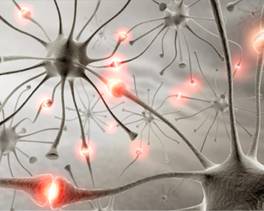
YOGA AND EPILEPSY
Yoga can be of benefit to some people with epilepsy. It is said to help people become balanced in mind and body and to aid relaxation. The ancient Indian practice and philosophy of yoga is increasingly becoming a focal point of therapy and research in treating epileptic seizure disorders.
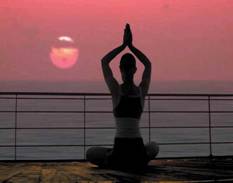
YOGA POSES FOR EPILEPSY
Meditation
Meditation is also an important part of the Yoga exercises to help prevent seizures. Stress can be a major trigger to seizures. Meditation can improve blood flow to the brain, slows stress hormones, and helps to increase the serotonin which helps keep the nervous system calm.
Shoulderstand Pose
The Shoulder Stand stimulates and rejuvenates your entire body. In this exercise, you build up both power and a new structure in your back and you relax tension in well-known stress areas like the neck and the lower back. The muscles of your lower back get stronger, the chest and shoulders can move more freely and the back gets straighter.
Headstand Pose
The Sanskrit word sirsha means head. This posture is the well-known headstand posture, and perhaps second only to the padma-asana or lotus posture, is widely identified with the practice of Yoga. During the practice of Yoga exercises, we not only relax the muscles but we also build up strength, structure and stability in the right spots. In Head Stand, you build up power and structure in both the neck and the upper back and at the same time; you train your arm muscles and coordination.
Plough Pose
A lot people complain about stiffness on the neck and lower back as a result of stress and wrong posture. In the Plough Pose, you stretch the neck and the lower back muscles. The Plough is also good for your digestion and it strengthens the kidneys, the liver and the gall bladder.
Corpse Pose
The Corpse Yoga Pose is considered as a classic relaxation Yoga Pose and is practiced before or in between Asanas as well as a Final Relaxation. While it looks deceptively simple, it is actually difficult to perform.
YOGA ASANAS FOR EPILEPSY
SHAVASANA
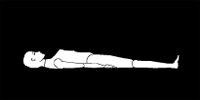
Shavasana is relaxation of body and mind in the position of lying on the back. This asana helps in relaxing mind and body and helps in restoring energy. It is a relaxing posture intended to rejuvenate one's body, mind and spirit. While shavasana is a good way to reduce stress and tension it is not recommended for meditation as it has a tendency to induce sleepiness.
Steps
• Lie on the back.
• Keep your spine, navel & pelvic in one line.
• Keep feet apart.
• Keep arms on the each side of body, palms facing to sky.
• Keep neck right or left side.
• Close your eyes & slowly try to concentrate each part of the body & try to relax that part.
SARVANGASAN
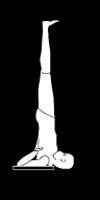
This asana is very good for the thyroid gland. This asana improves the reproductive organs in both men and women. It also helps in relieving bronchitis, dyspepsia, and varicose veins and increases digestive capacity. It stimulates the thyroid and para-thyroid glands and influences the brain, heart and lungs, and improves blood circulation. However, those suffering from high blood pressure should not practice this posture. The sarvanga-asana should not be performed by woman who are menstruating, as is the case with all inverted postures (where the legs are raise over the head.
Steps
• Lie on your back with legs and arms straight, feet together and palms on the floor beside your body. While exhaling, raise your legs slowly upto 90 and then the whole body and the rest your weight on the arms so that the chin touches the jugular notch.
• Bring the arms and hands to support your body at the hip region (fingers at the back and thumb in front of the body). The entire weight of your body rests on the head, neck and shoulders while the arms are used for balancing.
• Keep the trunk, legs and hips in a straight line and as vertical as possible Focus your eyes on your toes, with your chin pressed against the chest. Retain the posture for one for three minutes.
• While exhaling, return to the lying position by bringing the leg backward and releasing the hands and the palms.
MATSYASANA
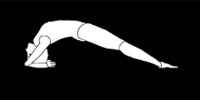
This asana is very useful for persons suffering from chronic cough, bronchial asthma, congestion, infected tonsils and other respiratory disorders. Problems relating to thyroid and para-thyroid glands can also be overcome be done to derive the full of Sarvangasana.it is recommended that you breath while holding it for between two and four minutes.
Steps
• Sit with your legs fully stretched out. Bend each leg at the knees and place your feet on the other hip joint. Both the heels are adjusted in such a way that each presses the adjacent portion of the abdomen. This forms the foot-lock in a sitting position.
• Bend backwards and, exhaling, rest your weight on the elbows. Push your neck backwards and slightly rise the hip upward thus making an arch of the spine.
• Then, by making hooks of the forefingers, hold your toes on the corresponding side without crossing your arms.This posture should be maintained for some time with slow and deep breathing.
• For reverting to the original position, release the foot-lock and return to the supine position by lowering the arch.
PASCHIMOTTANASANA
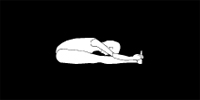
Paschimottanasana is a fine stretching exercise of the body. In one continuous movement, almost all the posterior muscles get fully stretched and relaxed. This helps to improve the functions of the abdominal organs and sets right respiratory disorders. It also helps to improve memory.
Steps
• This posture involves stretching of the posterior muscles of the body.
• While sitting, stretch your legs forward and keep them close to each other. Bend a little forward, make hooks of your fingers and hold the big toes on the respective sides.
• While exhaling, bend forward stretching the trunk along the thighs. Rest your on the knees, which should be kept straight.
• Gradually, the tense muscles can be made supple for securing the complete posture. Inhale and return to the original position
SHIRSHASANA
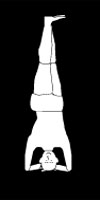
This asana is helpful in cases of dyspepsia and constipation. It improves the functions of the reproductive glands and heart muscles and is of great advantage in checking wet dreams.
Steps
• Sit in a kneeling position with the buttocks resting on the heels of the feet.
• Lean forward and place the forearms on the floor in front while keeping the elbows about shoulder distance apart. Interlock the fingers of both hands.
• Place the top of the head flat on the floor with the back of the head pressed against the inside of the interlocked fingers.
• Placing the tips of the toes firmly on the floor while lifting the heels, raise the knees off the floor.
• Hold for the duration of the held inhaled breath. When you can't hold the breath comfortable any longer, slowly exhale and return the back to the floor, slide the legs out straight returning to the shava-asana.
ASTROLOGY
Yoga is a Sanskrit term which means 'to unite'. What is being referred as the 'Yoga' in English, is more commonly known as 'Asana' in Sanskrit, which means different physical postures and poses. It is seen that people of a particular sun sign find it beneficial when they practice certain yoga asanas. According to astrological reports for yoga asanas the above mentioned asanas are said to be effective for those who come under the following zodiac sign.
• CANCER
• LIBRA